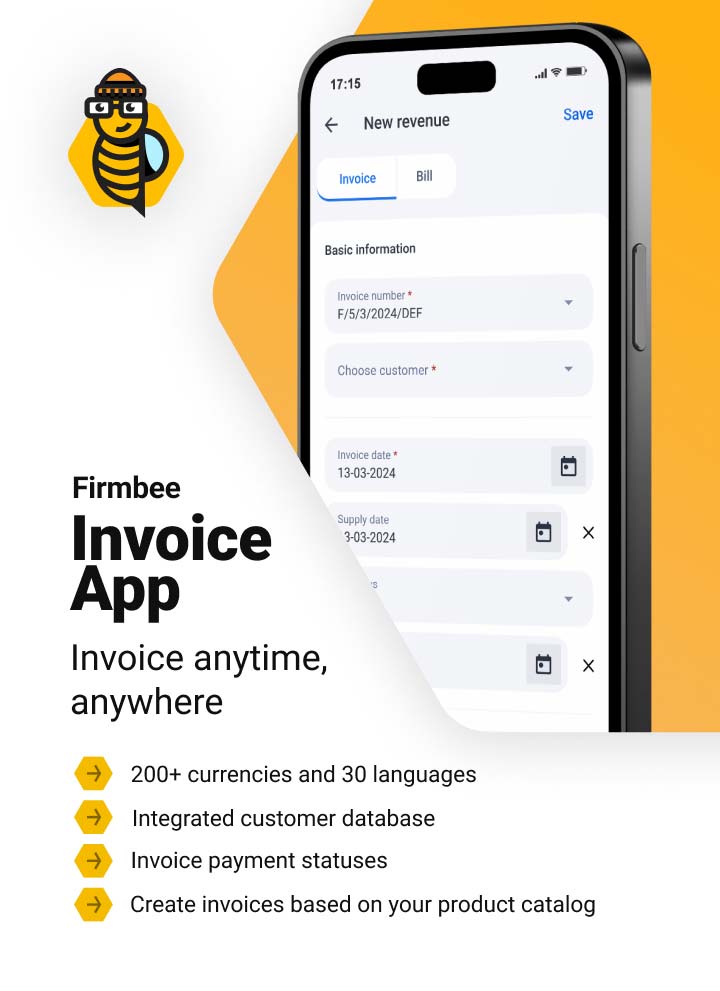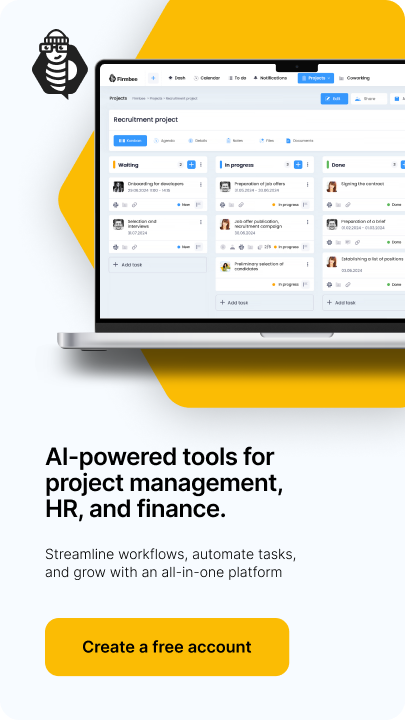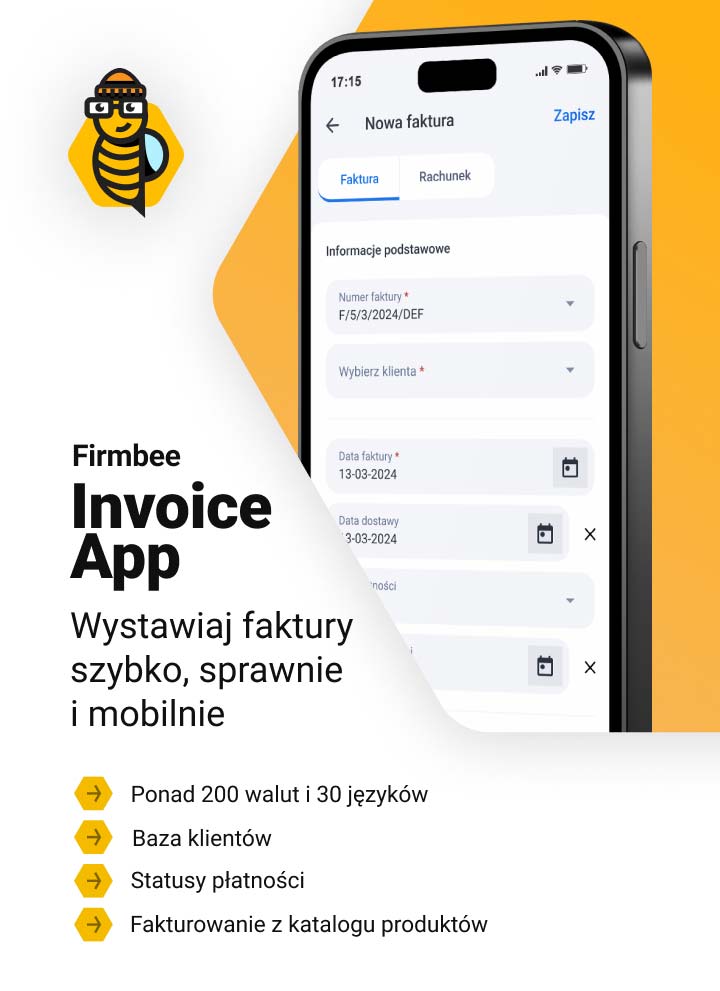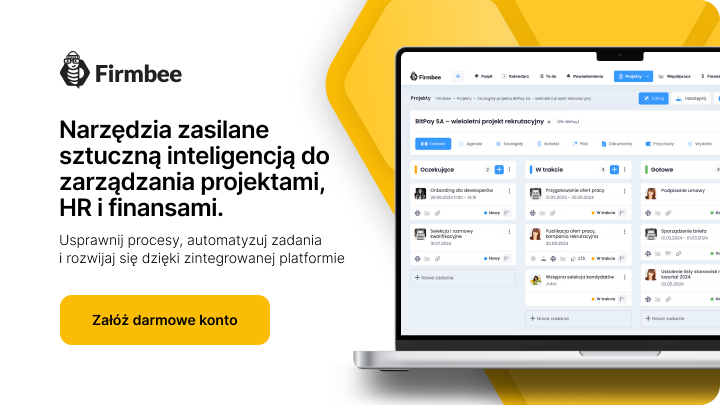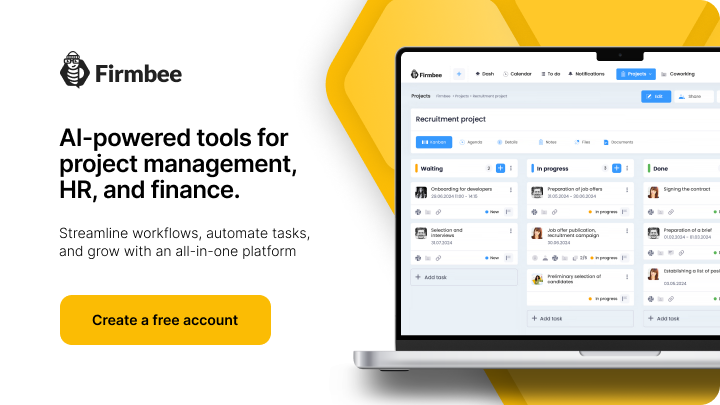Artificial intelligence helps us communicate with our devices through natural language – simply by asking questions and formulating commands. AI chatbots, also known as conversational bots or conversational AI are AI-based computer programs that simulate and process human conversations – written or spoken – enabling people to interact with digital devices as if they were talking to a real person. The global chatbot market is projected to reach $454.8 million in revenue in 2027, up from $40.9 million in 2018. That’s a lot indeed.
AI chatbots and voicebots – table of contents:
- How do voicebots and AI chatbots work?
- Types of chatbots and voicebots
- Task-based chatbots and voicebots
- Predictive chatbots and voicebots
- Examples of AI chatbots in business
- Examples of voicebots in business
- AI chatbot or voicebot - which one to choose for your business?
- Conversational artificial intelligence. The future of communication in business
How do chatbots and voicebots work?
Before you start thinking about which to opt for to help your business grow, let’s answer the question: How does a chatbot work? Artificial intelligence-based text chatbots allow users to ask natural language questions via text and get natural-sounding and meaningful answers. This is because they feature Natural Language Understanding (NLU) and Natural Language Generation (NLG) technologies.
Voicebot, on the other hand, enables callers to navigate the interactive voice response (IVR) system by voice. With them, callers don’t have to listen to a phone menu and press the appropriate numbers on a keypad. They talk to the IVR live, a simplified simulation of an operator call.
This is because they use the following technologies:
- Speech Recognition – converting the caller’s voice into text,
- Natural Language Understanding (NLU) – analyzing the understanding analyzing meaning units, extracting
- Language Generation (NLG) – generating an appropriate response based on the understanding of the query,
- Speech Synthesis Technology – converting the response into speech and delivering it to the caller.
Both bots can use large language models (LLMs) as the basis for creating human-like responses to natural language queries. LLMs are computer algorithms that process natural language input and predict the next word based on patterns they recognize. They adopt natural language processing (NLP) and Machine learning (ML) to analyze and generate text or speech.
LLMs provide the ability to deliver genuine, consistent, contextual responses by training on massive amounts of textual data. LLM therefore improves the ability of chatbots and voicebots to understand and generate natural language. For example, LLM can help voicebots handle complex queries or long dialogues.
LLM-based chatbots have many applications in business, such as customer service, sales, marketing, education, health, tourism, and others.
Types of AI chatbots
Chatbots can be divided into types according to the way they communicate, namely text and voice, and by their complexity and applications:
- Task-based chatbots – rule-based and task-oriented, the simplest to operate and implement,
- Predictive, data-driven chatbots and voicebots– requiring integration with a database or application, whose operation is most similar to a human conversation.
Explaining how a text or voice AI chatbot works depends on the type we discuss. So let’s take a closer look at each.
AI Chatbots and task voicebots
Task-based chatbots focus on performing a single function, such as providing information or finalizing simple transactions. They follow rules, natural language processing (NLP) and a bit of ML to generate responses to user queries that are automated but somewhat resemble a natural conversation.
Rule-based chatbots are highly specialized and their responses must be structured, so they are often used to support customer service and support departments. For example, a task-oriented chatbot can answer questions about opening hours, business scope or process simple orders. Task-oriented chatbots can handle typical questions, but are not very flexible and cannot adapt to new situations.
Similarly, rule-based voicebots follow predefined rules and scripts to handle simple and specific tasks. These could be, for example, booking a flight or checking the weather over the phone. They are easy to build but have limited capabilities and little adaptability.
An example of the difference between the way a rule-based task-based chatbot works and a chatbot using advanced AI is illustrated by the following excerpt from a dialogue:
| Bot: | How can I help you? Ask a question by typing “Opening Hours,” “Privacy Policy,” or “Buyer Protection Program.” | How can I help you? |
| Klient: | What time do you close? | What time do you close? |
| Bot: | Unfortunately, I don’t understand. Ask a question by typing in “Opening Hours,” “Privacy Policy,” or “Buyer Protection Program.” | Today, Monday, the store is open until 5 p.m. You are welcome! |
| Klient: | But I just want to know what time you close! | Thanks 🙂 |
The quoted dialogue shows the flexibility of an AI chatbot – from the short question “What time do you close?” it guesses from the context that the question is about the store’s operating hours and today’s day. Such a chatbot can also be taught to answer in a specific style that sustains the impression of a conversation with a specific person.
Predictive AI chatbots and voicebots
Data-driven chatbots and voicebots use data from various sources, such as:
- user profiles,
- preferences and settings,
- records of user behavior,
- feedback
All of this is to provide personalized and relevant answers. They can also use the data to learn and gradually improve their performance and accuracy.
The data is primarily used to predict users’ needs, intentions, emotions and provide proactive-predictive – responses. Chatbots can also use it to generate new ideas and suggestions for users.
Data-driven predictive AI chatbots are the most advanced. They can also be personalized and used as digital assistants that learn user preferences and can initiate conversations on their own. These two types are often combined to create more engaging and intelligent conversational agents.
They use context awareness, natural language understanding (NLU), natural language processing (NLP) and machine learning (ML) to learn over time. For example, a data-driven and predictive chatbot can help users learn languages through interactive dialogues and exercises, or suggest products based on user profiles and past behavior.
Examples of AI chatbots in business
Task-oriented chatbots perform a single function, such as providing information or finalizing simple transactions. For example, a task-oriented chatbot can:
- book a hotel room or airline ticket,
- order food or groceries online,
- check weather or road conditions,
- plan meeting,
- answer frequently asked questions (FAQs),
- customer support.
Popular examples of well-implemented task-oriented chatbots:
- Expedia’s chatbot – to find and book hotels and flights via Facebook Messenger,
- Domino Pizza chatbot – to order pizza and track delivery via Facebook Messenger,
- Poncho chatbot – to see weather forecasts and alerts via Facebook Messenger and Slack,
- Kayak chatbot – to plan trips and compare prices via Facebook Messenger, Slack and Alexa.
More advanced, data-driven and predictive text chatbots feature in :
- language learning or skills – like the Duolingo chatbot, which helps users learn foreign languages through interactive dialogues and exercises in the Duolingo app,
- suggesting products or services based on user profiles and past behavior,
- generating new ideas or content for creative projects,
- assisting in repetitive work tasks, such as managing finances, calendars, emails, etc., such as Google’s Bard, a text-based digital assistant that can generate texts and email them via Google Workspace
Some popular commercial examples of general-purpose predictive AI chatbots are:
- Apple’s Siri, a digital voice assistant that can perform various tasks and answer questions via iOS devices.
- Amazon’s Alexa, a digital voice assistant that can control smart home devices, play music, order products and more via Echo devices.
Examples of voicebots in business
If a customer calls to block a credit card, a voicebot can help find the way through all the steps without involving a human agent. To provide seamless customer service, voicebots can also help to improve employee productivity by automating tasks such as approving requests, ordering supplies, filling out forms or automating office tasks such as scheduling meetings.
Some of the best market solutions for voicebots are:
- Amazon Lex – A service that allows developers to create conversational interfaces using voice and text. Provides speech recognition, natural language understanding, natural language generation and speech synthesis capabilities. It also integrates with Amazon Alexa, Amazon Polly, Amazon Comprehend, etc.
- Google Dialogflow – A platform for creating natural and rich conversational experiences using voice and text. It provides speech recognition, natural language understanding, natural language generation and speech synthesis capabilities. It also integrates with Google Assistant, Google Cloud Speech-to-Text, Google Cloud Text-to-Speech, etc.
- IBM Watson Assistant – Enables developers to design conversational solutions via voice and text. Provides speech recognition, natural language understanding, natural language generation and speech synthesis capabilities. It also integrates with IBM Watson Speech Services, IBM Watson Text-to-Speech, IBM Watson Tone Analyzer, etc.
AI Chatbots or voicebots – Which one to choose for your business?
Chatbots and voicebots are two types of conversational artificial intelligence that can help companies automate customer interactions and provide better service. However, they have different strengths and limitations depending on the context and user preferences. Here are some criteria for choosing a solution:
- User interface – AI chatbots are more suitable for users who need access to visual information, such as images or links. Voicebots, on the other hand, are more suitable for those who need to communicate quickly or, for example, drive a car or operate a machine while talking.
- User experience – both rely on natural language understanding (NLU) to process user requests and intentions. Voicebots are more engaging, but their responses need to be truly human-like to perform their function. Voicebots also require speech recognition and synthesis, which can introduce more errors or delays in the conversation. On the other hand, chatbots can provide more feedback and guidance to the user through buttons, menus or emoticons. Moreover, they are easier to train and improve.
- Application -both can fit in customer service, sales, booking or information retrieval. However, some may be more functional for one specific duty, depending on its complexity, urgency or sensitivity. For example, text chatbots may be better for duties requiring authentication, verification or confirmation, while voicebots may be better for those that aim at speed, convenience or personalization.
To decide which one will fit better in your business, answer the following questions:
- Who are your target customers and what are their preferences and behaviors?
- What are your customers’ goals and pain points, and how can you solve them?
- What channels and platforms do customers use to interact with your business?
- What technical and financial resources do you have at your disposal to develop and maintain your conversational artificial intelligence solution?
This question will help you understand your customers’ needs and expectations, as well as their preferred method of communication. For example, if your customers are young, tech-savvy and mobile-oriented, they may prefer chatbots to voicebots. If your customers are older, less comfortable typing or have accessibility issues, they may prefer voicebots.
This question will help you define the value proposition and use case of your conversational artificial intelligence solution. For example, if customers want to quickly order a pizza or book a flight, they may prefer voicebots to chatbots. If customers want to compare products, read reviews or get detailed information, they may prefer chatbots.
This question will help you choose the best delivery method and integration options for your conversational artificial intelligence solution. For example, if your customers use social media, messaging apps or websites to contact you, they may prefer chatbots over voicebots. If your customers use phone calls, smart speakers or voice assistants to contact you, they may prefer voicebots over chatbots.
This question will help you assess the feasibility and scalability of your conversational artificial intelligence solution. For example, if you have limited resources or expertise, you may prefer chatbots over voicebots. Chatbots are generally easier and less expensive to develop and maintain. Voicebots require more advanced technologies and skills, such as speech recognition and synthesis, which can increase the cost and complexity of the solution.

Conversational artificial intelligence. The future of communication in business
As companies seek to build deeper, more meaningful relationships with their customers, the choice between chatbots and voicebots is not just about technology, but about understanding and anticipating human needs.
Combining artificial intelligence with the ability to have a conversation that resembles that of a human, promises not only efficiency but also a transformation of the way companies interact with their customers. For perhaps herein lies the future of business communication – more intuitive, personalized, and paradoxically, more human.
If you like our content, join our busy bees community on Facebook, Twitter, LinkedIn, Instagram, YouTube, Pinterest, TikTok.
Author: Robert Whitney
JavaScript expert and instructor who coaches IT departments. His main goal is to up-level team productivity by teaching others how to effectively cooperate while coding.
AI in business:
- Threats and opportunities of AI in business (part 1)
- Threats and opportunities of AI in business (part 2)
- AI applications in business - overview
- AI-assisted text chatbots
- Business NLP today and tomorrow
- The role of AI in business decision-making
- Scheduling social media posts. How can AI help?
- Automated social media posts
- New services and products operating with AI
- What are the weaknesses of my business idea? A brainstorming session with ChatGPT
- Using ChatGPT in business
- Synthetic actors. Top 3 AI video generators
- 3 useful AI graphic design tools. Generative AI in business
- 3 awesome AI writers you must try out today
- Exploring the power of AI in music creation
- Navigating new business opportunities with ChatGPT-4
- AI tools for the manager
- 6 awesome ChatGTP plugins that will make your life easier
- 3 grafików AI. Generatywna sztuczna inteligencja dla biznesu
- What is the future of AI according to McKinsey Global Institute?
- Artificial intelligence in business - Introduction
- What is NLP, or natural language processing in business
- Automatic document processing
- Google Translate vs DeepL. 5 applications of machine translation for business
- The operation and business applications of voicebots
- Virtual assistant technology, or how to talk to AI?
- What is Business Intelligence?
- Will artificial intelligence replace business analysts?
- How can artificial intelligence help with BPM?
- AI and social media – what do they say about us?
- Artificial intelligence in content management
- Creative AI of today and tomorrow
- Multimodal AI and its applications in business
- New interactions. How is AI changing the way we operate devices?
- RPA and APIs in a digital company
- The future job market and upcoming professions
- AI in EdTech. 3 examples of companies that used the potential of artificial intelligence
- Artificial intelligence and the environment. 3 AI solutions to help you build a sustainable business
- AI content detectors. Are they worth it?
- ChatGPT vs Bard vs Bing. Which AI chatbot is leading the race?
- Is chatbot AI a competitor to Google search?
- Effective ChatGPT Prompts for HR and Recruitment
- Prompt engineering. What does a prompt engineer do?
- AI Mockup generator. Top 4 tools
- AI and what else? Top technology trends for business in 2024
- AI and business ethics. Why you should invest in ethical solutions
- Meta AI. What should you know about Facebook and Instagram's AI-supported features?
- AI regulation. What do you need to know as an entrepreneur?
- 5 new uses of AI in business
- AI products and projects - how are they different from others?
- AI-assisted process automation. Where to start?
- How do you match an AI solution to a business problem?
- AI as an expert on your team
- AI team vs. division of roles
- How to choose a career field in AI?
- Is it always worth it to add artificial intelligence to the product development process?
- AI in HR: How recruitment automation affects HR and team development
- 6 most interesting AI tools in 2023
- 6 biggest business mishaps caused by AI
- What is the company's AI maturity analysis?
- AI for B2B personalization
- ChatGPT use cases. 18 examples of how to improve your business with ChatGPT in 2024
- Microlearning. A quick way to get new skills
- The most interesting AI implementations in companies in 2024
- What do artificial intelligence specialists do?
- What challenges does the AI project bring?
- Top 8 AI tools for business in 2024
- AI in CRM. What does AI change in CRM tools?
- The UE AI Act. How does Europe regulate the use of artificial intelligence
- Sora. How will realistic videos from OpenAI change business?
- Top 7 AI website builders
- No-code tools and AI innovations
- How much does using AI increase the productivity of your team?
- How to use ChatGTP for market research?
- How to broaden the reach of your AI marketing campaign?
- "We are all developers". How can citizen developers help your company?
- AI in transportation and logistics
- What business pain points can AI fix?
- Artificial intelligence in the media
- AI in banking and finance. Stripe, Monzo, and Grab
- AI in the travel industry
- How AI is fostering the birth of new technologies
- The revolution of AI in social media
- AI in e-commerce. Overview of global leaders
- Top 4 AI image creation tools
- Top 5 AI tools for data analysis
- AI strategy in your company - how to build it?
- Best AI courses – 6 awesome recommendations
- Optimizing social media listening with AI tools
- IoT + AI, or how to reduce energy costs in a company
- AI in logistics. 5 best tools
- GPT Store – an overview of the most interesting GPTs for business
- LLM, GPT, RAG... What do AI acronyms mean?
- AI robots – the future or present of business?
- What is the cost of implementing AI in a company?
- How can AI help in a freelancer’s career?
- Automating work and increasing productivity. A guide to AI for freelancers
- AI for startups – best tools
- Building a website with AI
- OpenAI, Midjourney, Anthropic, Hugging Face. Who is who in the world of AI?
- Eleven Labs and what else? The most promising AI startups
- Synthetic data and its importance for the development of your business
- Top AI search engines. Where to look for AI tools?
- Video AI. The latest AI video generators
- AI for managers. How AI can make your job easier
- What’s new in Google Gemini? Everything you need to know
- AI in Poland. Companies, meetings, and conferences
- AI calendar. How to optimize your time in a company?
- AI and the future of work. How to prepare your business for change?
- AI voice cloning for business. How to create personalized voice messages with AI?
- Fact-checking and AI hallucinations
- AI in recruitment – developing recruitment materials step-by-step
- Midjourney v6. Innovations in AI image generation
- AI in SMEs. How can SMEs compete with giants using AI?
- How is AI changing influencer marketing?
- Is AI really a threat to developers? Devin and Microsoft AutoDev
- AI chatbots for e-commerce. Case studies
- Best AI chatbots for ecommerce. Platforms
- How to stay on top of what's going on in the AI world?
- Taming AI. How to take the first steps to apply AI in your business?
- Perplexity, Bing Copilot, or You.com? Comparing AI search engines
- ReALM. A groundbreaking language model from Apple?
- AI experts in Poland
- Google Genie — a generative AI model that creates fully interactive worlds from images
- Automation or augmentation? Two approaches to AI in a company
- LLMOps, or how to effectively manage language models in an organization
- AI video generation. New horizons in video content production for businesses
- Best AI transcription tools. How to transform long recordings into concise summaries?
- Sentiment analysis with AI. How does it help drive change in business?
- The role of AI in content moderation

